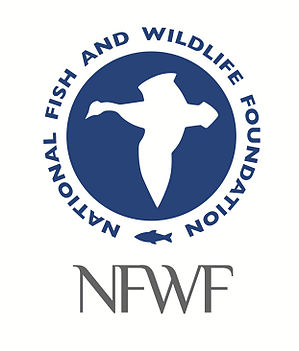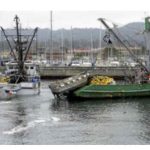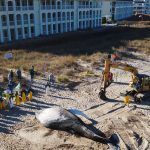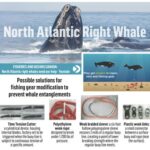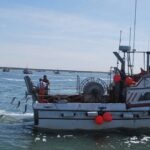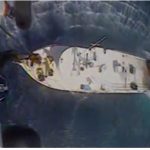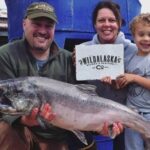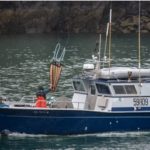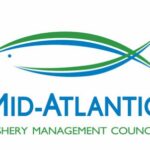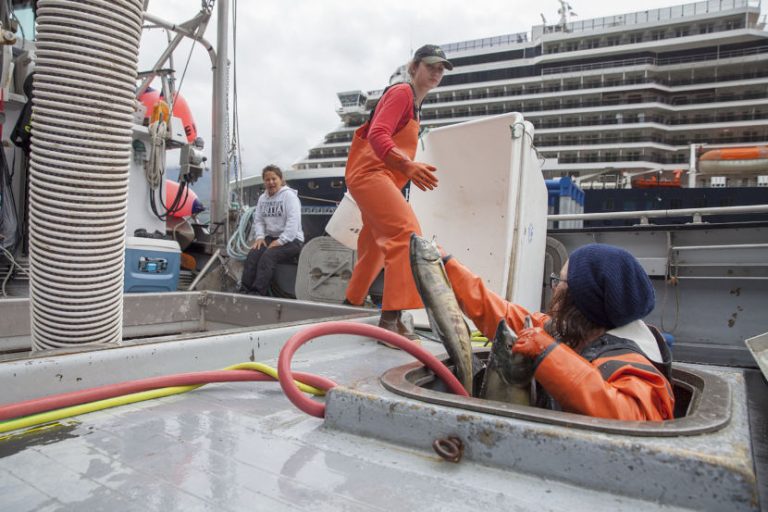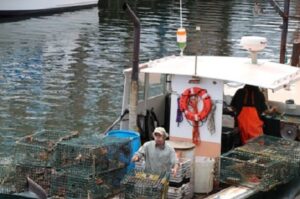Tag Archives: Nature Conservancy
More alewives swim up the restored Bagaduce watershed
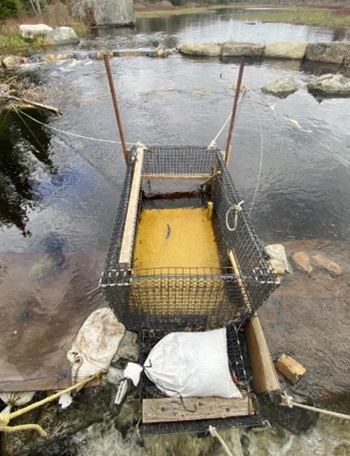 More than two years after the completion of multiple fish passage projects in western Hancock County, the effort appears to be paying off as alewives swim in greater numbers up the Bagaduce River watershed each spring. Those and other projects have contributed to a resurgence in the upstream migration of alewives, which are a key food supply for bigger wildlife, as well as a growing source of income for Maine fishermen who sell them as food or springtime lobster bait. From 2017 through 2021, the towns of Penobscot, Sedgwick and Brooksville worked with conservation groups to remove barriers that prevented fish from migrating between the tidal Bagaduce River and five ponds in its watershed. The idea was to help restore runs for fish, especially alewives, that travel upstream from Penobscot Bay and reproduce in the ponds more, >>CLICK TO READ<< 14:55
More than two years after the completion of multiple fish passage projects in western Hancock County, the effort appears to be paying off as alewives swim in greater numbers up the Bagaduce River watershed each spring. Those and other projects have contributed to a resurgence in the upstream migration of alewives, which are a key food supply for bigger wildlife, as well as a growing source of income for Maine fishermen who sell them as food or springtime lobster bait. From 2017 through 2021, the towns of Penobscot, Sedgwick and Brooksville worked with conservation groups to remove barriers that prevented fish from migrating between the tidal Bagaduce River and five ponds in its watershed. The idea was to help restore runs for fish, especially alewives, that travel upstream from Penobscot Bay and reproduce in the ponds more, >>CLICK TO READ<< 14:55
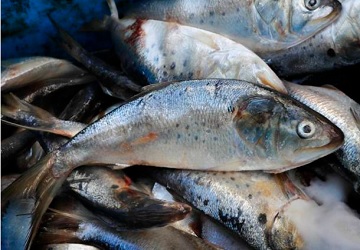
Maine lawmakers approve bill to limit number of pogie fishing licenses
Under a bill passed by the Maine Legislature on Wednesday, the state’s pogie fishery will be closed to all fishermen in 2023 except current license holders who meet certain criteria. To be eligible, fishermen must have held a license to fish for pogies in at least two of three years from 2019-21 and have landed 25,000 pounds in at least one of those years. Those who have the required license history but have not yet met the landings requirement have until the end of 2022 to harvest 25,000 pounds. >click to read< 15:43
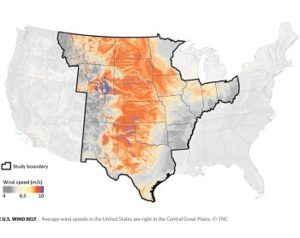
The U.S. “wind belt” – Map Shows ‘Low-Impact’ Locations for Wind Power
Wind energy developers both onshore and offshore face numerous challenges. Concerns about noise from wind turbines, disruption of visual aesthetics, and danger to wildlife have led to the cancellation or delay of several projects in recent years. The group’s analysis focused on finding land with high wind energy potential, but where impacts would be low to wildlife and the surrounding land. The Nature Conservancy partnered with organizations in each of the 17 states it studied, and gathered more than 100 data sets from conservation and land use organizations as well as state agencies. The group said more than 60 scientists worked to develop the siting map, with an eye toward helping developers avoid unsuitable sites. >click to read< 09:16

Inside The Climate Change Money Machine
For far too long the public has been deluded into believing that groups whose titles indicate their efforts to protect our environment are the Davids in a battle with the Goliath industrial complex of our nation. They tell a story of protecting our air, our water, our forests, and our wildlife. Ron Arnold and Paul Driessen, authors of Cracking Big Green, learned to read IRS form 990 included in the annual reports of non-profit organizations. Here is what they found to have been the incomes of some of the major well-known groups in 2012 alone. The Sierra Club took in $97,757,678,, Environmental Defense Fund took in $111,915,138 (more), But those are the medium-sized incomes, here are the biggies: The Nature Conservancy $949,132,306,,, The U.S. Chamber of Commerce’s report “Sue and Settle: Regulating Behind Closed Doors, >click to read< 10:43

13 years ago, the Nature Conservancy desperately wanted to protect groundfish. Now it wants you to eat them
In 2006, the crash of the groundfish population — bottom-dwelling fish like petrale sole, chilipepper rockfish and sand dabs that used to be common on Bay Area tables — led the Nature Conservancy to buy up 13 fishing permits and some California fishermen’s vessels. The state worked with a handful of the state’s remaining groundfish trawlers to change how they fish and protect vulnerable habitat. Now that groundfish populations have rebounded, the Nature Conservancy wants the public to know they’re OK to eat again. >click to read< (if you don’t get propaganda sick) 10:27
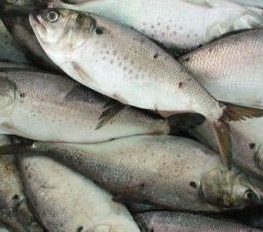
Fight Against Atlantic Menhaden Certification Moves to Next Round
The objections raised by sportfishing groups in opposition to certification of the industrial Atlantic menhaden fishery as a “sustainable fishery” are scheduled to be heard by an independent adjudicator on July 8 and 9. In March, the Theodore Roosevelt Conservation Partnership (TRCP), Coastal Conservation Association (CCA) and American Sportfishing Association (ASA) filed an objection—which was later combined with a similar objection raised by The Nature Conservancy and Chesapeake Bay Foundation—to the Marine Stewardship Council’s (MSC) recommendation that Omega Protein should receive a certification of sustainability for its U.S. Atlantic menhaden purse-seining operations. >click to read<13:53

Top brass exit Nature Conservancy amid sexual harassment investigation
#MeToo strikes again. This time it is within the world’s leading conservation organization, the Nature Conservancy. The first to exit the organization due to an investigation into sexual harassment and workplace misconduct were Mark Burget, head of the group’s North American operations, and Kacky Andrews, who led global programs.,,, Well, hold on. There’s more. Friday CEO Tercek resigned, just a week after McPeek’s exit.,,, Tercek joined The Nature Conservancy in 2008 from Goldman Sachs. (surely an environmentalist!),,, I’ll end with a little nugget I found. Friday Mary Kay, Inc., an original glass ceiling breaker among corporations offering opportunities to women, announced it has partnered with the Nature Conservancy in a program called the Texas Fisheries & Coastal Resilience Program. >click to read<18:27
Mary Kay Inc. Partners with The Nature Conservancy to Advance Sustainable Fishing in Gulf of Mexico – Mary Kay Inc., an international leader in corporate and social responsibility, today announced its partnership with The Nature Con – >click to read<

Nature Conservancy president resigns in wake of sexual harassment probe
Nature Conservancy President Brian McPeek resigned Friday, just days after the group completed an investigation into sexual harassment and workplace misconduct at the world’s largest environmental organization. The news came two days after POLITICO first reported on the internal investigation at the group, which reported $1.3 billion in revenues last year and has long drawn support from both Democrats and Republicans. Its board of directors includes former Republican Senate Majority Leader Bill Frist and former Obama administration Interior Secretary Sally Jewell, and its executives include former Obama White House climate adviser Heather Zichal. >click to read<11:06
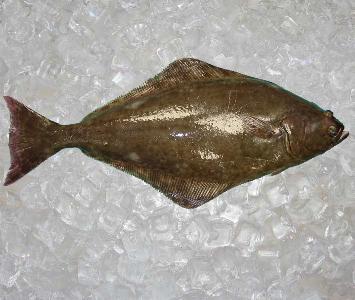
Alaskan fishermen aren’t the only ones noticing the rise of Atlantic halibut
As prices and demand for Pacific halibut have fallen in Alaska, commercial fishermen say a new Canadian competitor is to blame. Since 2012, Canadian imports of fresh Atlantic halibut have grown roughly 60 percent. Historically, Atlantic halibut has not competed with its close relative on the West Coast since New England and Canadian fishermen overfished stocks in the late 1880s. But as the catch continues to grow north of the border, fishermen in New England are working towards restarting a fishery in U.S. waters.,, “A lot of those boats are fishing on the U.S.-Canadian line and having very good results, and it’s been going on for a while,” Mike Russo said, a New England-based commercial fisherman. >click to read<16:03
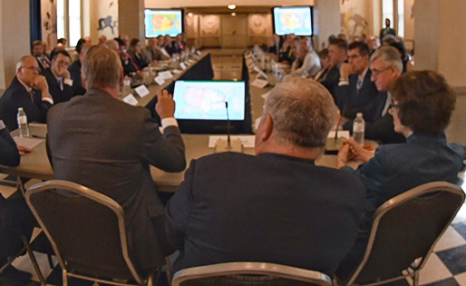
Zinke tells greens he’ll make ‘grand pivot’ to conservation
Interior Secretary Ryan Zinke yesterday huddled with more than two dozen conservation group leaders, including some of his staunchest critics, in his latest bid to generate both ideas and support for his ambitious departmental reorganization plans. He got an earful, and may have gained some goodwill. During a get-together at Interior headquarters that lasted nearly two hours, the conservationists and sportsmen started talking reorganization and branched out from there. >click to read<10:35
Fake Data Behind Coral Bleaching Report
 In Hawaii, there are many who constantly try to bring to an end our ability to feed people. The latest example was November 2, 2017 when a group of legislators orchestrated an informational conference on coral reef bleaching and overfishing. The conference was put together by Representative Kaniela Ing (Maui), by Representative Cedric Gates (West Oahu), Representative Chris Lee (Waimanalo), and Representative Nicole Lowen (Kona). Why are these politicians making it harder to survive in Hawaii? Their goal is to create new laws and legislatively mandate closure of 30% of the Hawaiian Island near-shore waters. Taking into account the recent closures to the North West Hawaiian Islands, that is over 80% of what used to be fishing grounds and a food source to our local population. There were many holes in the conference keynote lecture by Dr. Alan M. Friedlander. But the news picked up on it and made it out to be a life or death situation. click here to read the story 09:09
In Hawaii, there are many who constantly try to bring to an end our ability to feed people. The latest example was November 2, 2017 when a group of legislators orchestrated an informational conference on coral reef bleaching and overfishing. The conference was put together by Representative Kaniela Ing (Maui), by Representative Cedric Gates (West Oahu), Representative Chris Lee (Waimanalo), and Representative Nicole Lowen (Kona). Why are these politicians making it harder to survive in Hawaii? Their goal is to create new laws and legislatively mandate closure of 30% of the Hawaiian Island near-shore waters. Taking into account the recent closures to the North West Hawaiian Islands, that is over 80% of what used to be fishing grounds and a food source to our local population. There were many holes in the conference keynote lecture by Dr. Alan M. Friedlander. But the news picked up on it and made it out to be a life or death situation. click here to read the story 09:09

Cape Cod fishermen have high hopes for halibut
On the U.S. side of the border Atlantic halibut are listed under the Endangered Species Act and fishermen are limited to one fish per trip. Less than a half a day’s steam to the east, the same fish is the poster child for sustainable fishery management and generates between $100 million and $200 million a year for Canadian fishermen. It’s a divergence shrouded in mystery as deep as the ocean on either side of the Hague Line, the boundary that separates the two nations out to the 200 mile limit of their exclusive economic zones. The target date to rebuild the U.S. Atlantic halibut stock to healthy levels is 2056, nearly 40 years in the future. click here to read the story 07:49

Canastra Brothers Offering $93 Million for ‘Codfather’s’ Fishing Fleet
One of the owners of the Whaling City Seafood Display Auction in New Bedford is shedding more light on a proposed deal to buy the “codfather’s” fishing fleet. Carlos Rafael has been sentenced to 46 months in prison for his illegal fishing scheme, and cannot be involved in the fishing industry during that time and three years after his release. In an exclusive interview with WBSM’s Phil Paleologos, Richard Canastra confirms he and his brother, Ray, have entered into a memorandum of agreement with Rafael to buy his business, Carlos Seafood, Inc, for $93 million. Video, click here to read the story 16:41
Deal between Rafael, Canastra brothers worth $93M, still needs government OK – While the Canastras and Rafael have agreed, the deal isn’t complete. NOAA and the U.S. Attorney haven’t taken a final position on the proposed sale, according to court documents click here to read the story21:03
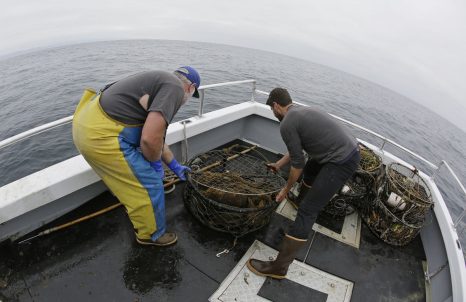
Environmental group sues California over whale-killing gear
An environmental group sued the state of California on Tuesday for allegedly not doing enough to keep Dungeness crab fishery gear from killing protected whales. The Center for Biological Diversity filed its lawsuit in federal court in San Francisco, saying the California Department of Fish and Wildlife is liable for a surge in entanglements of endangered whales and sea turtles because it authorizes and manages operation of the fishery. click here to read the story 15:18
California crabbers use GPS to find whale-killing gear
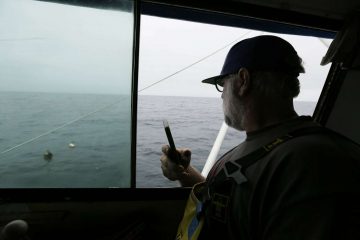 Fisherman Jake Bunch leans over the side of the fishing boat “Sadie K,” spears his catch, and reels it aboard: an abandoned crab pot, dangling one limp lasagna noodle of kelp and dozens of feet of rope, just the kind of fishing gear that has been snaring an increasing number of whales off U.S. coasts. This year, Bunch is one of small number of commercial fishermen out of Half Moon Bay, south of San Francisco, and five other ports up and down California who headed to sea again after the West Coast’s Dungeness crab season ended this summer. The California fishermen are part of a new effort using their cellphones’ GPS and new software pinpointing areas where lost or abandoned crabbing gear has been spotted. They retrieve the gear for a payment — at Half Moon Bay, it’s $65 per pot —before the fishing ropes can snag a whale. click here to read the story 20:44
Fisherman Jake Bunch leans over the side of the fishing boat “Sadie K,” spears his catch, and reels it aboard: an abandoned crab pot, dangling one limp lasagna noodle of kelp and dozens of feet of rope, just the kind of fishing gear that has been snaring an increasing number of whales off U.S. coasts. This year, Bunch is one of small number of commercial fishermen out of Half Moon Bay, south of San Francisco, and five other ports up and down California who headed to sea again after the West Coast’s Dungeness crab season ended this summer. The California fishermen are part of a new effort using their cellphones’ GPS and new software pinpointing areas where lost or abandoned crabbing gear has been spotted. They retrieve the gear for a payment — at Half Moon Bay, it’s $65 per pot —before the fishing ropes can snag a whale. click here to read the story 20:44
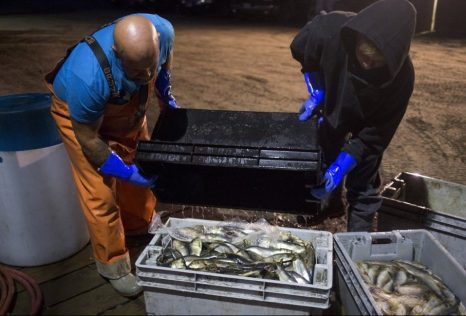
Lobstermen test new bait as hedge against herring price spikes
Two lobstering co-ops in Tenants Harbor and Port Clyde are working with The Nature Conservancy to see if they can freeze the alewives that bait their traps so successfully each spring to catch lobster at other times of the year. If it works, alewives could be the affordable bait they need when their usual favorite, Atlantic herring, is in short supply, such as it is again this summer. “It’s the second year in a row where we’ve had bait problems,” said Josh Miller, a 40-year-old lobsterman who belongs to the Tenants Harbor Lobstermen’s Co-op. “Most wharves are on (herring) rations. The prices have gone up 10 percent already. We started the season with prices that never dropped from last year, when we had a bait shortage. Bait is a huge issue.” click here to read the story 07:49
California fishermen, once blocked by conservationists, now work with them
 Morro Bay, a town on California’s central coast, touts itself as a fishing community. Fishing has been vital for the town’s economy, but it collapsed at the turn of the century because of overfishing and subsequent federal regulation. Fishermen were offered some relief money for their losses, but the industry was left for dead. Now, things are on the upswing thanks to an unlikely partnership between local fishermen and environmental group The Nature Conservancy.,,, The Nature Conservancy, a powerful nonprofit, became interested in the area more than a decade ago. Known for buying up land to protect it from development, the group’s first strategy was to buy up about half of all the available groundfish licenses. click here to read the story. 09:49
Morro Bay, a town on California’s central coast, touts itself as a fishing community. Fishing has been vital for the town’s economy, but it collapsed at the turn of the century because of overfishing and subsequent federal regulation. Fishermen were offered some relief money for their losses, but the industry was left for dead. Now, things are on the upswing thanks to an unlikely partnership between local fishermen and environmental group The Nature Conservancy.,,, The Nature Conservancy, a powerful nonprofit, became interested in the area more than a decade ago. Known for buying up land to protect it from development, the group’s first strategy was to buy up about half of all the available groundfish licenses. click here to read the story. 09:49
At Sea, Under the Eyes of Cameras
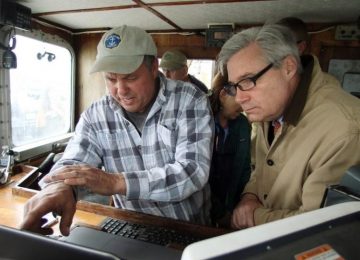 Chris Brown has grown used to the five video cameras that record every move he and his two crew members make aboard the Proud Mary. Since installing the equipment in January on the 45-foot otter trawler, whenever Brown steams out of Galilee in search of flounder and other groundfish in the Atlantic Ocean waters off Rhode Island, the electronic monitoring system kicks on. Brown is one of three Rhode Island fishermen who have signed on to a program that is testing out electronic surveillance as an alternative to human monitors that the federal government requires to be on board one in every seven fishing trips in the Northeast in an effort to stamp out overfishing. The new program being led by The Nature Conservancy offers the potential for closer observation of commercial fishing, enhancing compliance with quotas and deterring misreporting. But not everyone has embraced electronic monitoring. Click here to read the story 10:51
Chris Brown has grown used to the five video cameras that record every move he and his two crew members make aboard the Proud Mary. Since installing the equipment in January on the 45-foot otter trawler, whenever Brown steams out of Galilee in search of flounder and other groundfish in the Atlantic Ocean waters off Rhode Island, the electronic monitoring system kicks on. Brown is one of three Rhode Island fishermen who have signed on to a program that is testing out electronic surveillance as an alternative to human monitors that the federal government requires to be on board one in every seven fishing trips in the Northeast in an effort to stamp out overfishing. The new program being led by The Nature Conservancy offers the potential for closer observation of commercial fishing, enhancing compliance with quotas and deterring misreporting. But not everyone has embraced electronic monitoring. Click here to read the story 10:51
The latest weapon in the fight against illegal fishing? Artificial intelligence
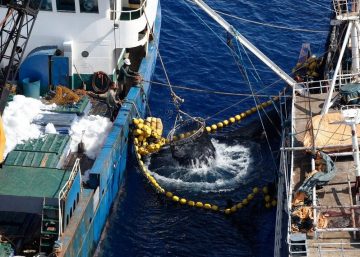 Facial recognition software is most commonly known as a tool to help police identify a suspected criminal by using machine learning algorithms to analyze his or her face against a database of thousands or millions of other faces. The larger the database, with a greater variety of facial features, the smarter and more successful the software becomes – effectively learning from its mistakes to improve its accuracy. Now, this type of artificial intelligence is starting to be used in fighting a specific but pervasive type of crime – illegal fishing. Rather than picking out faces, the software tracks the movement of fishing boats to root out illegal behavior. And soon, using a twist on facial recognition, it may be able to recognize when a boat’s haul includes endangered and protected fish. The latest effort to use artificial intelligence to fight illegal fishing is coming from New York-based The Nature Conservancy (TNC), which launched a contest on Kaggle – a crowdsourcing site based in San Francisco that uses competitions to advance data science –earlier this week. TNC hopes the winning team will write software to identify specific species of fish. The program will run on cameras, called electronic monitors, which are installed on fishing boats,,, Read the rest here 15:32
Facial recognition software is most commonly known as a tool to help police identify a suspected criminal by using machine learning algorithms to analyze his or her face against a database of thousands or millions of other faces. The larger the database, with a greater variety of facial features, the smarter and more successful the software becomes – effectively learning from its mistakes to improve its accuracy. Now, this type of artificial intelligence is starting to be used in fighting a specific but pervasive type of crime – illegal fishing. Rather than picking out faces, the software tracks the movement of fishing boats to root out illegal behavior. And soon, using a twist on facial recognition, it may be able to recognize when a boat’s haul includes endangered and protected fish. The latest effort to use artificial intelligence to fight illegal fishing is coming from New York-based The Nature Conservancy (TNC), which launched a contest on Kaggle – a crowdsourcing site based in San Francisco that uses competitions to advance data science –earlier this week. TNC hopes the winning team will write software to identify specific species of fish. The program will run on cameras, called electronic monitors, which are installed on fishing boats,,, Read the rest here 15:32Maine fishermen testing a ‘game-changer’ for protected cod in the Gulf of Maine
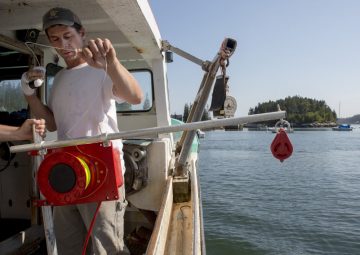 Like many Maine fishermen, Bryan Kelley faces a dilemma as he looks to diversify beyond the lobster that account for the bulk of his catch. To target pollock, which are relatively common in the Gulf of Maine, he has to fish in the same areas frequented by cod, a type of groundfish protected through strict federal catch limits. “We literally have to stay away from the codfish,” Kelley said while standing on his 40-foot boat moored in the Five Islands harbor of Georgetown. “I could fill this with codfish if I wanted to, but that wouldn’t help anybody in this sector and that is not why we are out here.” To help him catch the groundfish he wants and avoid the species he doesn’t, Kelley has begun experimenting with a contraption akin to a conventional fishing reel on steroids and with an electronic brain. The “automatic jigging machines” loaned to Kelley and a handful of other fishermen by The Nature Conservancy allow them to more accurately target the water column where pollock hang out and stay off the bottom where cod lurk. Read the rest here 07:49
Like many Maine fishermen, Bryan Kelley faces a dilemma as he looks to diversify beyond the lobster that account for the bulk of his catch. To target pollock, which are relatively common in the Gulf of Maine, he has to fish in the same areas frequented by cod, a type of groundfish protected through strict federal catch limits. “We literally have to stay away from the codfish,” Kelley said while standing on his 40-foot boat moored in the Five Islands harbor of Georgetown. “I could fill this with codfish if I wanted to, but that wouldn’t help anybody in this sector and that is not why we are out here.” To help him catch the groundfish he wants and avoid the species he doesn’t, Kelley has begun experimenting with a contraption akin to a conventional fishing reel on steroids and with an electronic brain. The “automatic jigging machines” loaned to Kelley and a handful of other fishermen by The Nature Conservancy allow them to more accurately target the water column where pollock hang out and stay off the bottom where cod lurk. Read the rest here 07:49South Shore ground fishermen skeptical of plan to use digital cameras for monitoring mandate
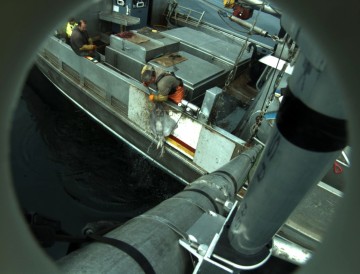 Longtime commercial fishermen from Marshfield and Scituate said the project to equip some groundfishing boats with digital cameras comes with numerous pitfalls, including cost burdens and concerns about how video footage would be used. Beginning this week, up to 20 groundfishermen from the Maine and Cape Cod will use three to four cameras to document fish handling on their vessels. At the end of each fishing trip, boat captains will send hard drives to third-party reviewers, who will view the footage and determine how much fish was discarded. The Nature Conservancy is overseeing the project and hailed it Tuesday as a “new era in fisheries monitoring” South Shore fisherman Ed Barrett questioned whether there would be any cost savings, saying the camera equipment would cost thousands of dollars. Read the rest here 10:06
Longtime commercial fishermen from Marshfield and Scituate said the project to equip some groundfishing boats with digital cameras comes with numerous pitfalls, including cost burdens and concerns about how video footage would be used. Beginning this week, up to 20 groundfishermen from the Maine and Cape Cod will use three to four cameras to document fish handling on their vessels. At the end of each fishing trip, boat captains will send hard drives to third-party reviewers, who will view the footage and determine how much fish was discarded. The Nature Conservancy is overseeing the project and hailed it Tuesday as a “new era in fisheries monitoring” South Shore fisherman Ed Barrett questioned whether there would be any cost savings, saying the camera equipment would cost thousands of dollars. Read the rest here 10:06
Sector Groups turning to technology to meet monitoring mandate
 New England fishermen are starting to use digital cameras to document groundfish discards and prove they are fishing within established quotas, turning to technology for a method that may prove more cost effective than hiring human monitors. With support from the Gulf of Maine Research Institute, The Nature Conservancy is overseeing a new project, which launches on Wednesday, June 1 and is being hailed as a “new era in fisheries monitoring.” Up to 20 groundfishermen from the Maine Coast Community Sector and Cape Cod’s Fixed Gear Sector will use three to four cameras to capture fish handling activity on the decks of their vessels. After completing their trips, crews will send hard drives to third party reviewers who watch the footage and quantify the amount of discarded fish. Read the rest here 13:17
New England fishermen are starting to use digital cameras to document groundfish discards and prove they are fishing within established quotas, turning to technology for a method that may prove more cost effective than hiring human monitors. With support from the Gulf of Maine Research Institute, The Nature Conservancy is overseeing a new project, which launches on Wednesday, June 1 and is being hailed as a “new era in fisheries monitoring.” Up to 20 groundfishermen from the Maine Coast Community Sector and Cape Cod’s Fixed Gear Sector will use three to four cameras to capture fish handling activity on the decks of their vessels. After completing their trips, crews will send hard drives to third party reviewers who watch the footage and quantify the amount of discarded fish. Read the rest here 13:17
Con group buys $1m worth of groundfish quota
The  (MBFT) bought $1m worth of groundfish quota — 4.2m annual quota pounds — from the nonprofit Nature Conservancy which it plans to use to benefit the area’s fishermen, MBFT said in a release. As part of the agreement, MBFT, which was formed to protect central California fisheries in the Monterey, Moss Landing, and Santa Cruz harbors, plans to retain ownership of the quota. It will lease the fishing rights to fishermen “while working to improve the economic and environmental performance of the fishery,” the group said in the release. Read the rest here 17:08
(MBFT) bought $1m worth of groundfish quota — 4.2m annual quota pounds — from the nonprofit Nature Conservancy which it plans to use to benefit the area’s fishermen, MBFT said in a release. As part of the agreement, MBFT, which was formed to protect central California fisheries in the Monterey, Moss Landing, and Santa Cruz harbors, plans to retain ownership of the quota. It will lease the fishing rights to fishermen “while working to improve the economic and environmental performance of the fishery,” the group said in the release. Read the rest here 17:08
Last Groundfish Permit Stays on Martha’s Vineyard, Though Unicorn Days Are Numbered
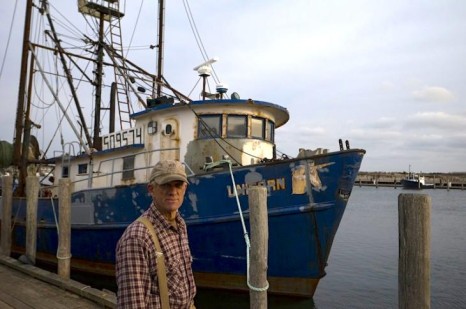 The Nature Conservancy, working with the Martha’s Vineyard Fishermen’s Preservation Trust, has purchased the Island’s last historic groundfish permit, marking a major milestone in the trust’s efforts to develop a permit bank to support Island fishermen. The federal , also known as a groundfish permit, was held by Greg Mayhew, owner of the Unicorn, a legendary 75-foot dragger out of Menemsha. He declined to comment on the cost of the permit, saying only that prices for fishing permits can range from $20,000 to $2 million. Read the rest here 20:14
The Nature Conservancy, working with the Martha’s Vineyard Fishermen’s Preservation Trust, has purchased the Island’s last historic groundfish permit, marking a major milestone in the trust’s efforts to develop a permit bank to support Island fishermen. The federal , also known as a groundfish permit, was held by Greg Mayhew, owner of the Unicorn, a legendary 75-foot dragger out of Menemsha. He declined to comment on the cost of the permit, saying only that prices for fishing permits can range from $20,000 to $2 million. Read the rest here 20:14
Do any of these issues, and notions bother you? Or is it only me?!!
 The Monterey Bay Aquarium is gathering leaders in science, activism, media and the seafood industry at its home-base in Monterey, California for two days of in-depth discussions on sustainable food — especially seafood — this week. The event, “Sustainable Foods Institute”. Issues: Consultant: Thai slave labor reports are real – Whiskas maker to get into aquaculture by 2020 – Paleo diet days numbered, says panelist – Atlantic bluefin tuna stock down 96% on management failure – Damanaki floats idea of US-EU-Japan collaboration on global fisheries protection – Stakeholders relay ‘blood and guts’ story of West Coast groundfish climb to sustainability – Aquarium pumping expertise into ASEAN sustainability efforts Read the rest here 14:43
The Monterey Bay Aquarium is gathering leaders in science, activism, media and the seafood industry at its home-base in Monterey, California for two days of in-depth discussions on sustainable food — especially seafood — this week. The event, “Sustainable Foods Institute”. Issues: Consultant: Thai slave labor reports are real – Whiskas maker to get into aquaculture by 2020 – Paleo diet days numbered, says panelist – Atlantic bluefin tuna stock down 96% on management failure – Damanaki floats idea of US-EU-Japan collaboration on global fisheries protection – Stakeholders relay ‘blood and guts’ story of West Coast groundfish climb to sustainability – Aquarium pumping expertise into ASEAN sustainability efforts Read the rest here 14:43
Seafood Harvesters of America “National Outreach Days,” in Washington D.C.
 On April 28th the Seafood Harvesters of America will converge on our elected representatives to stay the course on a broken Magnuson Stevens Act. As other groups call for flexibility, the primarily catch share fishery group wants to maintain rigidity! The Seafood Harvesters are aligned with the likes of the Pew Charitable Trust, EDF, and the Nature Conservancy. House Resolution 1335, the Strengthening Fishing Communities and Increasing Flexibility in Fisheries Management Act will fix MSA. This is not why this group is in D.C. Read the rest here 10:33
On April 28th the Seafood Harvesters of America will converge on our elected representatives to stay the course on a broken Magnuson Stevens Act. As other groups call for flexibility, the primarily catch share fishery group wants to maintain rigidity! The Seafood Harvesters are aligned with the likes of the Pew Charitable Trust, EDF, and the Nature Conservancy. House Resolution 1335, the Strengthening Fishing Communities and Increasing Flexibility in Fisheries Management Act will fix MSA. This is not why this group is in D.C. Read the rest here 10:33
Tom Dempsey Resigns from the NEFMC
 I’m writing to tell you that I’ve accepted a new job and, for that reason, have resigned as a member of the New England Fishery Management Council. I’ll be working with The Nature Conservancy’s Sustainable Fisheries Initiative in California,,, Read the rest here 08:24
I’m writing to tell you that I’ve accepted a new job and, for that reason, have resigned as a member of the New England Fishery Management Council. I’ll be working with The Nature Conservancy’s Sustainable Fisheries Initiative in California,,, Read the rest here 08:24
Derelict crab gear is spotted by air, snagged at sea
By air and sea, environmental groups and the Quinault Indian Nation are spotting and retrieving derelict crab pots over 150 square miles of ocean, pots with lines that can ensnare gray and humpback whales and endanger boats. Read the rest here
Alright Fishermen. Listen up! How a Club of Billionaires and Their Foundations Control the Environmental Movement and Obama’s EPA
 Think NOAA/NMFS! How a Club of Billionaires and Their Foundations Control the Environmental Movement and Obama’s EPA A new report was released today by the Senate Environment and Public Works committee, and it is damning. All this time that climate skeptics are accused of being in the employ of “big oil” is nothing more than a projection of their own greed. Read more here Read the Senate.gov report 17:25
Think NOAA/NMFS! How a Club of Billionaires and Their Foundations Control the Environmental Movement and Obama’s EPA A new report was released today by the Senate Environment and Public Works committee, and it is damning. All this time that climate skeptics are accused of being in the employ of “big oil” is nothing more than a projection of their own greed. Read more here Read the Senate.gov report 17:25






